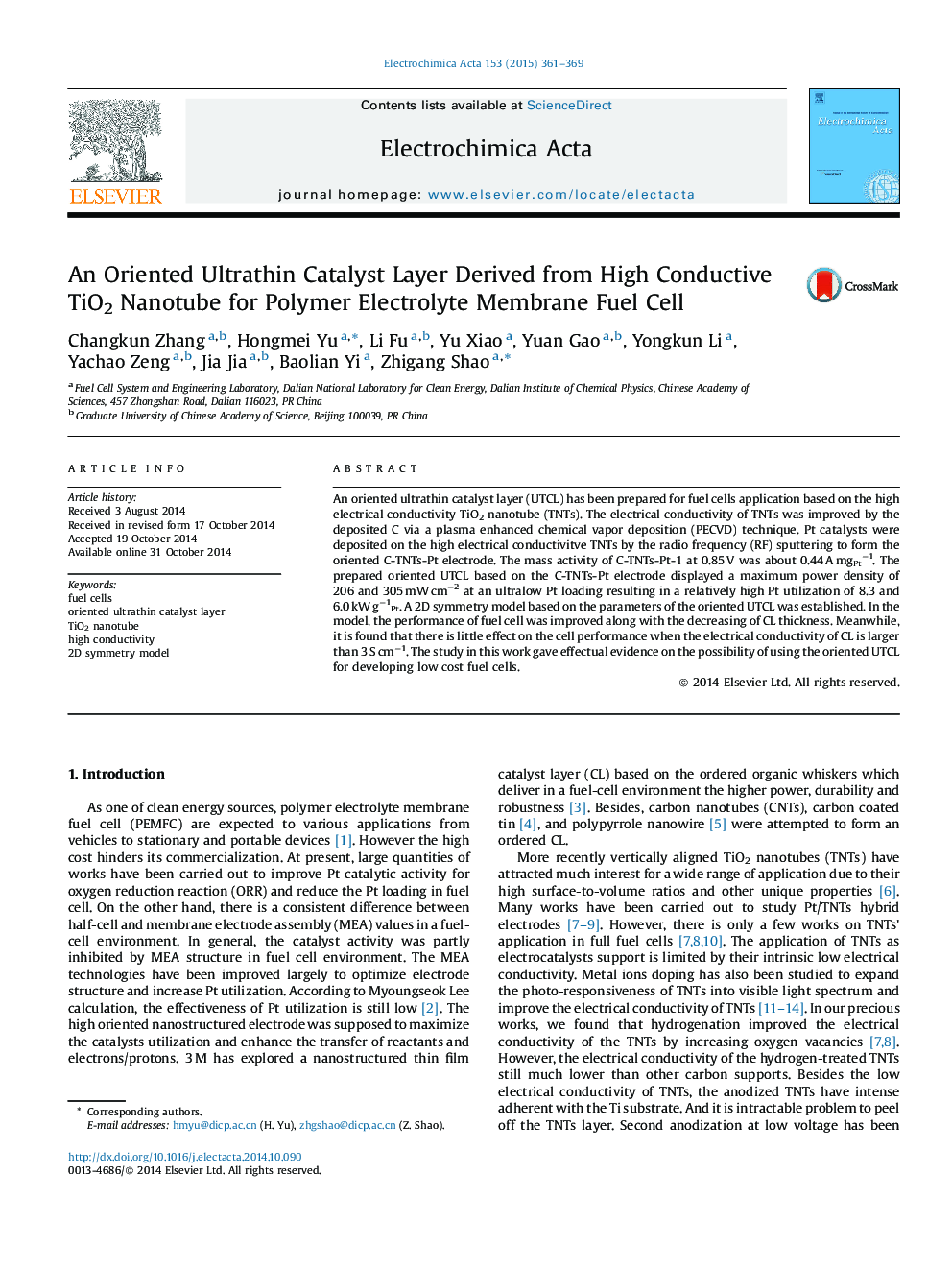| کد مقاله | کد نشریه | سال انتشار | مقاله انگلیسی | نسخه تمام متن |
|---|---|---|---|---|
| 184766 | 459581 | 2015 | 9 صفحه PDF | دانلود رایگان |

An oriented ultrathin catalyst layer (UTCL) has been prepared for fuel cells application based on the high electrical conductivity TiO2 nanotube (TNTs). The electrical conductivity of TNTs was improved by the deposited C via a plasma enhanced chemical vapor deposition (PECVD) technique. Pt catalysts were deposited on the high electrical conductivitve TNTs by the radio frequency (RF) sputtering to form the oriented C-TNTs-Pt electrode. The mass activity of C-TNTs-Pt-1 at 0.85 V was about 0.44 A mgPt−1. The prepared oriented UTCL based on the C-TNTs-Pt electrode displayed a maximum power density of 206 and 305 mW cm−2 at an ultralow Pt loading resulting in a relatively high Pt utilization of 8.3 and 6.0 kW g−1Pt. A 2D symmetry model based on the parameters of the oriented UTCL was established. In the model, the performance of fuel cell was improved along with the decreasing of CL thickness. Meanwhile, it is found that there is little effect on the cell performance when the electrical conductivity of CL is larger than 3 S cm−1. The study in this work gave effectual evidence on the possibility of using the oriented UTCL for developing low cost fuel cells.
Journal: Electrochimica Acta - Volume 153, 20 January 2015, Pages 361–369